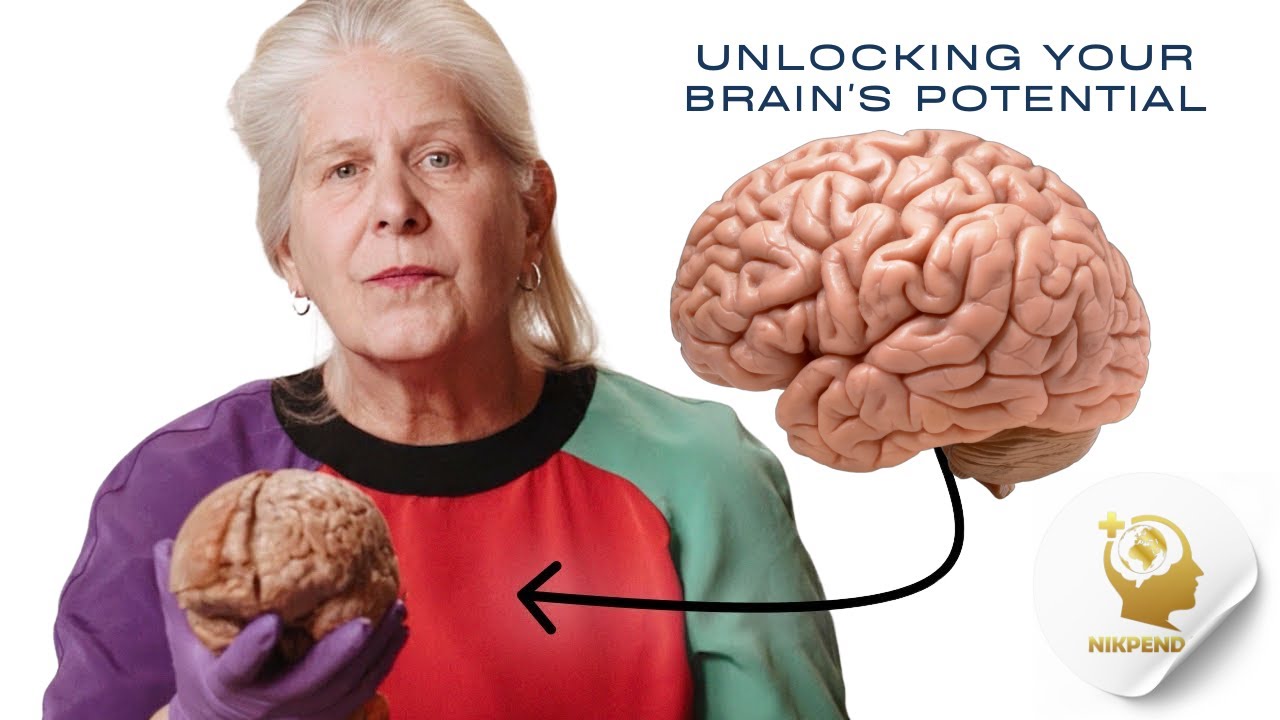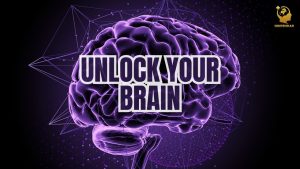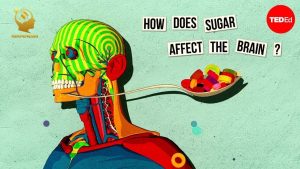
Beginner
Task 1: Listen and Repeat
Instructions: Listen to the speaker say the following words and phrases. Then, repeat them aloud with the correct pronunciation.
Words/Phrases: “perception box,” “neuroscientist,” “rewire,” “negativity bias,” “small wins,” “tarmac highway,” “metacognition.”
Task 2: Simple Questions
Instructions: After watching the video, answer the following questions with a short, simple sentence.
Questions:
- What does the speaker call the box that keeps us stuck?
- Who are the two sisters in the story?
- What is one thing the speaker says we can do to change our thoughts?
Task 3: Personal Connection
Instructions: Think about your own life. Tell a classmate one simple thing you are good at, like dancing or drawing, just like in the story about the two sisters.
Example: “I am good at drawing.” or “I am a good student.”
Intermediate
Task 1: Summarize a Key Idea
Instructions: In your own words, explain the concept of the “perception box” from the video. What is it, and how does it affect people? Use at least two complete sentences.
Task 2: Discuss Observational Knowledge
Instructions: The speaker talks about “observational knowledge.” Explain this concept and give one example from the video. Then, provide one example from your own life of something you learned through observational knowledge.
Task 3: Role-Playing a Conversation
Instructions: With a partner, act out a short conversation. One person is the “speaker” from the video and the other is a “friend.” The speaker’s goal is to help the friend see their “small wins.” Use the phrases “small win” and “negativity bias” in your conversation.
Advanced
Task 1: Analyze a Metaphor
Instructions: The speaker uses the metaphor of a “tarmac highway” and a “dirt road” to describe changing thought patterns. Explain this metaphor in detail. How does it effectively illustrate the process of rewiring your brain?
Task 2: Reflect and Discuss
Instructions: The speaker mentions that we can learn to be critical of ourselves by observing others. Think about your own life. Have you ever noticed this “flip side” of observational knowledge in yourself or others? Discuss this with a partner, providing specific examples.
Task 3: Propose a Solution
Instructions: The video explains that our brains can get stuck in a loop of negative stories due to confirmation bias. Propose a specific, practical strategy you could use to break this cycle. Your strategy should be based on the concepts presented in the video, such as “metacognition” or “pulling out small wins.” Present your strategy to a small group and explain why you think it would be effective.
Beginner
Task 1: Listen for Key Words
Instructions: Listen carefully to the video. Put a checkmark next to the words you hear the speaker say.
Word List:
- [ ] beliefs
- [ ] brain
- [ ] stories
- [ ] parents
- [ ] animals
- [ ] family
- [ ] school
- [ ] work
Task 2: Identify Main Ideas
Instructions: Watch the video again. For each question, choose the correct answer.
Questions:
What is the speaker’s name?
- a) Samantha
- b) Martha
- c) Nicole
What is the main topic of the video?
- a) How to be a good dancer.
- b) How our thoughts and beliefs can change.
- c) How to be a better student.
What are the two sisters’ names in the story?
- a) Samantha and Martha
- b) Martha and Nicole
- c) Nicole and Samantha
Task 3: Follow Instructions
Instructions: Listen for the speaker’s advice about “small wins.” What does she suggest we should ask ourselves and others? Write down the question she suggests.
Answer Space: _________________________________________________________________
Intermediate
Task 1: Listen for Specific Details
Instructions: Watch the video and answer the following questions with specific information you hear.
Questions:
- What two professions does Nicole Vinola have?
- What is the title of her book?
- According to the speaker, what happens when we name our thoughts? What part of the brain is engaged?
Task 2: Match Concepts and Definitions
Instructions: Listen for the following terms in the video. Match each term to its correct definition as described by the speaker.
Terms:
- Observational knowledge
- Negativity bias
- Confirmation bias
Definitions:
- A. The tendency to perceive negative information more strongly than positive information.
- B. The process of learning about the world by watching others.
- C. The tendency to look for information that proves your existing beliefs are correct.
Task 3: Listen and Sequence Events
Instructions: The speaker tells a story about two sisters, Samantha and Martha. Listen to the story and put the following events in the correct order. Write the numbers 1, 2, and 3 in the boxes.
Events:
- [ ] Martha started to experience failures.
- [ ] Martha was always the more academic sister.
- [ ] Martha didn’t know how to handle the failures.
Advanced
Task 1: Identify and Explain a Metaphor
Instructions: Listen for the metaphor the speaker uses to describe the process of changing a deeply ingrained thought pattern. What is this metaphor, and how does it effectively illustrate the difficulty and effort required to change?
Task 2: Analyze and Summarize a Section
Instructions: Listen to the section of the video where the speaker discusses the human brain’s desire to “optimize energy.” Summarize her point about why our brains repeat ingrained patterns and what we can do to consciously change this.
Task 3: Listen and Infer Meaning
Instructions: Listen to the speaker’s discussion of “metacognition.” Based on her explanation, what is the purpose of watching and naming our thoughts? What is the ultimate benefit of this process, and how does it relate to “taking control of that steering wheel”? Explain in detail, using information from the video.
Beginner
Task 1: Matching Words
Instructions: The following words are from the video. Match the words on the left with the words on the right to make a phrase.
Matching Pairs:
- perception a. psychologist
- organizational b. bias
- negativity c. knowledge
- observational d. box
Task 2: True or False
Instructions: Read the sentences below. Based on the video, decide if each sentence is true or false.
Statements:
- The speaker is a doctor. (True/False)
- Samantha was always a good dancer. (True/False)
- The brain can change. (True/False)
Task 3: Reading for Details
Instructions: Read the section of the video about the two sisters. What was Martha known for?
Answer Space: _________________________________________________________________
Intermediate
Task 1: Fill-in-the-Blanks
Instructions: Read the sentences below, which are taken from the video. Fill in the blanks with the correct words.
Sentences:
- “The stories that we tell ourselves about ourselves have been shaped by our ________ and our ________.”
- “We can ________ the box that we’re in.”
- “The brain is capable of change well into ________.”
Task 2: Define Key Terms
Instructions: Read the video and find the definitions of the following terms. Write a short explanation for each one in your own words.
Terms:
- Perception Box
- Observational Knowledge
- Negativity Bias
Task 3: Comprehension Questions
Instructions: Read the video carefully and answer the following questions in complete sentences.
Questions:
- What is the “flip side” of observational knowledge?
- What is confirmation bias, and what does it cause us to do?
- What happens when we name our thoughts?
Advanced
Task 1: Summarize a Section
Instructions: Read the section of the video that explains the brain’s “tarmac highway” metaphor. In a paragraph of 3-4 sentences, summarize what the speaker means by this metaphor and why it’s a good comparison.
Task 2: Analyze Cause and Effect
Instructions: Read the video and identify the cause and effect relationships. Fill in the blanks below.
Cause and Effect Chart:
- Cause: Parents exacerbate a particular narrative.
- Effect: ____________________________________________________________________
- Cause: ____________________________________________________________________
- Effect: We learn to do the same thing.
- Cause: The brain perceives a negative template as normal.
- Effect: ____________________________________________________________________
Task 3: Critical Reading and Synthesis
Instructions: Read the entire video and synthesize the main arguments. What is the central message of the speaker? How do the concepts of “perception box,” “negativity bias,” and “metacognition” all support her main point? Write a well-structured paragraph that explains your answer.
Beginner
Task 1: Matching Words
Instructions: The following words are from the video. Match the words on the left with the words on the right to make a phrase.
Matching Pairs:
- perception a. psychologist
- organizational b. bias
- negativity c. knowledge
- observational d. box
Task 2: True or False
Instructions: Read the sentences below. Based on the video, decide if each sentence is true or false.
Statements:
- The speaker is a doctor. (True/False)
- Samantha was always a good dancer. (True/False)
- The brain can change. (True/False)
Task 3: Reading for Details
Instructions: Read the section of the video about the two sisters. What was Martha known for?
Answer Space: _________________________________________________________________
Intermediate
Task 1: Fill-in-the-Blanks
Instructions: Read the sentences below, which are taken from the video. Fill in the blanks with the correct words.
Sentences:
- “The stories that we tell ourselves about ourselves have been shaped by our ________ and our ________.”
- “We can ________ the box that we’re in.”
- “The brain is capable of change well into ________.”
Task 2: Define Key Terms
Instructions: Read the video and find the definitions of the following terms. Write a short explanation for each one in your own words.
Terms:
- Perception Box
- Observational Knowledge
- Negativity Bias
Task 3: Comprehension Questions
Instructions: Read the video carefully and answer the following questions in complete sentences.
Questions:
- What is the “flip side” of observational knowledge?
- What is confirmation bias, and what does it cause us to do?
- What happens when we name our thoughts?
Advanced Level
Task 1: Summarize a Section
Instructions: Read the section of the video that explains the brain’s “tarmac highway” metaphor. In a paragraph of 3-4 sentences, summarize what the speaker means by this metaphor and why it’s a good comparison.
Task 2: Analyze Cause and Effect
Instructions: Read the video and identify the cause and effect relationships. Fill in the blanks below.
Cause and Effect Chart:
- Cause: Parents exacerbate a particular narrative.
- Effect: ____________________________________________________________________
- Cause: ____________________________________________________________________
- Effect: We learn to do the same thing.
- Cause: The brain perceives a negative template as normal.
- Effect: ____________________________________________________________________
Task 3: Critical Reading and Synthesis
Instructions: Read the entire video and synthesize the main arguments. What is the central message of the speaker? How do the concepts of “perception box,” “negativity bias,” and “metacognition” all support her main point? Write a well-structured paragraph that explains your answer





